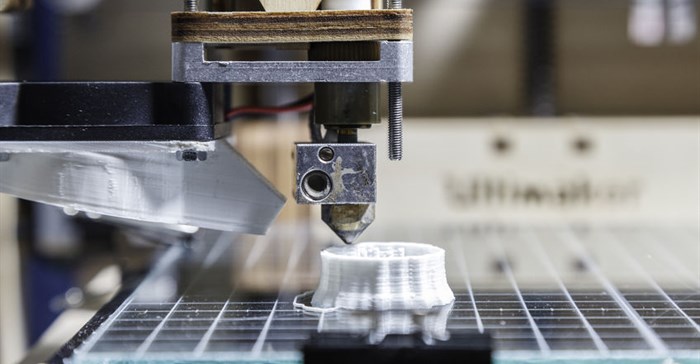Middle East and Africa 3D printing market to total $1.3 billion by 2019

IDC expects this high rate of growth to have a transformative effect on how previously mass-produced goods are manufactured, with 3D printing enabling such products to be customised for individual requirements. While the world's emerging markets, in general, will represent a clear growth opportunity, IDC expects the Asia-Pacific region to contribute most to near-term growth, as China – in particular – becomes a leading market for 3D printing hardware and services. Nevertheless, MEA will maintain its position as a frontrunner in this space, and its share of global 3D printing spend is expected to grow from 4.3% in 2014 to 5.0% by 2019.
"It is clear that 3D printing offers considerable growth potential in the Middle East and Africa region," says Martin Kuban, a senior research analyst with IDC Manufacturing Insights. "The technology will dynamically proliferate across multiple manufacturing industries over the coming years, and we are already seeing significant interest from manufacturers in the GCC countries looking to utilise 3D printing technology. Aside from some of the more obvious applications within the automotive and aerospace industries, we expect to see some innovative and potentially transformative 3D printing deployments among medical suppliers, electronics manufacturers, and tools and components manufacturers."
Mainstream adoption
IDC's 3D printing research indicates that the MEA 3D printer market is ready for greater mainstream adoption. And the technologies that enable 3D printing are continuing to develop at a rapid pace and expand in nearly every direction, creating an incredibly broad range of use cases in industries such as healthcare, education, construction, and retail.
"We are also seeing increasing adoption among oil and gas companies in the Middle East as they look to enable the rapid prototyping of parts on their sites, which can often be found in extremely isolated locations," says Ashwin Venkatchari, IDC's senior programme manager for imaging devices and document solutions in the Middle East, Africa and Turkey. "This limits downtime and reduces costs, which is particularly important in this current environment of low oil prices. But cost savings aren't the only drivers of 3D printing in the region; for example, the healthcare industry is one of the fastest growing users of technology, and the primary driver in this space is the ability of 3D printing to improve the lives of patients."
The Worldwide Semiannual 3D Printing Spending Guide quantifies opportunities for 3D printers. Spending data is available for more than 20 use cases across 20 industries in eight regions. Data is also available for 3D printing hardware, materials, software, and services. The spending guide was designed to help IT decision makers clearly understand the industry-specific scope and direction of 3D printing expenditure over the next five years.
Related
5 key trends driving the manufacturing sector in 2025 5 Feb 2025 Huawei rides high as wearables market shifts gears 23 Dec 2024 TNPA, IDC call for proposals for the Liquefied Natural Gas (LNG) terminal at the Port of Ngqura 25 Sep 2024 Huawei dominates global wearable market 12 Sep 2024 The future is female – a celebration of women in the creative and cultural industries 30 Aug 2024 Basa and IDC partner to present ‘Moments in Miniature’ exhibition for Women’s Month 16 Aug 2024






















